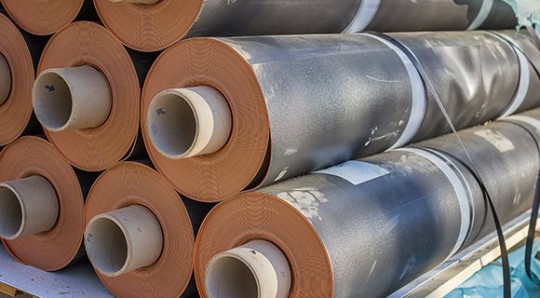#Gas membrane
Explore tagged Tumblr posts
Text
OLD (ish) ART DUMP



(trash but I love them)
#iz#invader zim fanart#my art#Almighty tallest#The Almighty tallest fanart#Invader Zim dib#Invader Zim dib membrane#Dib membrane#Invader Zim gaz#Invader Zim gaz membrane#Gas membrane#Zim fanart#Human!Zim#Invader Zim gir#Gir#Human!gir#Human! Au#Almighty tallest miyuki#Miyuki#Miyuki fanart#Traditional art#Doodles#080 artposting#invader zim
40 notes
·
View notes
Text













Sorry for having autism it’ll happen again
(Click for quality or smth idfkkk)
#ninjago#ninjago dragons rising#ninjago art#raine's art#raine’s doodles#ninjago spoilers#oc: gas-sag#oc: bit-tib#larow is inspired by prof. membrane from iz and the scientist from carmen sandiego#I think her name was sara right ?#Idfk#Not tagging all of them#jordana ninjago#ninjago jordana#nokt ninjago#rox ninjago#ras ninjago#ninjago bonzle#harumi ninjago#lloyd ninjago#ninjago arrakore
114 notes
·
View notes
Text
Hey, this new trend? The one where you hold your breath and walk through fear gas? Please stop doing it. Holding your breath will not protect you
#only in gotham#gotham city#just gotham things#unreality#fear gas can stick to your skin and line your mucous membranes#then it's nightmare dimension for you
22 notes
·
View notes
Text
#weirdgirlshowdown#over the garden wall#beatrice otgw#foster's home for imaginary friends#goo goo ga ga#beetlejuice#lydia deetz#scooby doo#velma dinkley#invader zim#gaz membrane#amphibia#marcy wu#gravity falls#mabel pines#the simpsons#lisa simpson
234 notes
·
View notes
Text

Todays Hinako is: new friend!
4 notes
·
View notes
Text
Atlanta Commercial Roofing

Protect your Atlanta commercial property from severe weather, leaks, and indefinite closure. Understanding available commercial roof types and which roofing company can meet your commercial structure’s needs will help preserve your business operation and property value.

New Image Roofing Atlanta gathered information about commercial roofing systems, why commercial roofs leak, signs your roof needs to be replaced, commercial roof maintenance programs, and why New Image Roofing Atlanta should be your roofer.
Commercial Roofing System Types

Commercial roofs come in various materials and designs, each suited to specific building needs. New Image Roofing Atlanta specializes in multiple commercial roofing systems, including:
1. TPO (Thermoplastic Polyolefin) – TPO is a popular choice due to its energy efficiency, durability, and UV ray resistance. Its heat-welded seams provide superior waterproofing, making it an excellent choice for flat and low-slope roofs.

2. PVC (Polyvinyl Chloride) – PVC is known for its chemical resistance and durability. It’s an ideal option for restaurants or manufacturing facilities where exposure to grease or chemicals is a concern.
3. EPDM (Ethylene Propylene Diene Monomer) – This rubber roofing material is resistant to weathering and an economical choice for flat roofs. It is lightweight and flexible – suitable for various building sizes.
4. Built-Up Roofing (BUR) – Built-up roofing consists of multiple layers of asphalt and fabric, topped with a protective coating. It offers excellent durability and is a time-tested solution for flat roofs.

5. Metal Roofing – Metal roofs are lightweight, durable, and environmentally friendly. They are available in materials like aluminum, steel, and copper, with long-term reliability and aesthetics.
6. Torch-Down Roofing – Torch-down roofing is made from modified bitumen and applied using a torch. This material is waterproof and resistant to extreme weather, making it a reliable option for flat or low-slope roofs.

Note: Only a few roofing companies are qualified in torch-down roofing. New Image Roofing Atlanta’s installation crews are fully trained and licensed to install and maintain torch-down roofing systems.
Why Commercial Roofs Leak

Even the best commercial roofs can develop problems over time due to various factors. Here are common reasons for commercial roof leaks:
1. Age – Roofing materials degrade over time. As a roof ages, it becomes less effective at protecting the building, making leaks more likely.
2. Bad Flashing – Flashing seals the edges of roof penetrations like vents and chimneys. Improper installation or deterioration can create entry points for water.
3. Faulty Penetration Boots – Rubber boots used to seal around pipes or other penetrations can crack or wear down, leading to water infiltration.
4. Branch, Debris, or Foot-Traffic Damage – Branches and debris can puncture roofing membranes, and excessive foot traffic can wear down materials, compromising the roof’s integrity.
5. Mold Damage – Mold and algae thrive in Atlanta’s humid climate. Over time, they can weaken roofing materials and lead to leaks.
6. Damaged Membrane – The membrane of a flat roof is its primary barrier against water. Tears, punctures, or wear in the membrane can result in leaks.
7. Drain and Gutter Issues – Clogged drains and gutters can cause water to pool on the roof, leading to leaks and structural damage.
Commercial Roof Replacement Signs

Knowing when to replace a commercial roof is crucial to avoid costly repairs and prevent damage to your property. Here are signs that indicate it may be time for a replacement:
Frequent Repairs: A complete replacement may be more cost-effective when a roof requires frequent maintenance.
Visible Damage: Cracks, tears, or punctures in the roofing material suggest that it’s nearing the end of its lifespan.
Water Stains and Leaks: Persistent water stains on ceilings or walls often indicate significant roof damage.
Sagging Roof Sections: Structural issues like sagging indicate that the roof’s integrity is compromised.
Old Age: Most commercial roofs have a lifespan of 15–30 years, depending on the material.
The Fast Process at New Image Roofing Atlanta
New Image Roofing Atlanta understands that time is money for businesses, which is why they’ve streamlined their process to deliver fast, efficient service without sacrificing quality:
1. Comprehensive Inspection: Their team conducts a thorough assessment using advanced technology to pinpoint issues.
2. Detailed Recommendations: You’ll receive a precise, no-obligation estimate outlining the best solutions for your roof.
3. Swift Action: Whether a minor repair or a complete replacement, their experienced team gets the job done quickly and efficiently.
4. Minimal Disruption: They work around your schedule to minimize interruptions to your business operations.
Roof Maintenance Program Benefits

Preventative maintenance is one of the best ways to extend the life of your roof and avoid costly repairs. Here’s why investing in a roof maintenance program is essential:
1. Early Problem Detection – Routine inspections help identify minor issues before they escalate into significant problems.
2. Extended Lifespan – Regular maintenance, such as cleaning and resealing, preserves the roof’s materials and delays replacement.
3. Improved Energy Efficiency – A well-maintained roof provides better insulation, reducing energy costs for heating and cooling.
4. Warranty Compliance – Many manufacturers require routine maintenance to keep warranties valid.
5. Cost Savings – Preventative care is far more affordable than emergency repairs or premature roof replacements.
Why Choose New Image Roofing Atlanta?

A reliable and high-quality roofing system is essential to protect commercial properties in Atlanta. Businesses need durable roofing solutions capable of withstanding Georgia’s unpredictable weather conditions. New Image Roofing Atlanta has built a strong reputation for delivering exceptional commercial roofing services with unmatched efficiency and professionalism. Trusted by companies like Delta, Piggly Wiggly, Norfolk Southern, Mavis Tires and Brakes, Krispy Kreme, and Volvo, the company has become a go-to resource for businesses across the city. Consider the following:
Expertise with Significant Clients – Serving clients like Delta, Piggly Wiggly, and Norfolk Southern, New Image Roofing Atlanta has proven its ability to handle large-scale commercial projects efficiently.
Commitment to Quality – The company uses only premium materials and follows industry best practices, ensuring long-lasting results.
Customer-Centric Approach – New Image Roofing Atlanta prides itself on transparency, clear communication, and exceptional customer service.
Environmentally Responsible – They prioritize sustainability by recycling old roofing materials whenever possible.
BBB Accredited Business – New Image Roofing Atlanta is an accredited – A+ Rated – roofing contractor.

Commercial Roofing Atlanta
In this article, you discovered crucial information about commercial roofing systems, why they leak, signs your roof needs to be replaced, commercial roof maintenance programs, and why you need New Image Roofing Atlanta to be your roofer.
A reliable roof is an essential investment for Atlanta-based businesses. New Image Roofing Atlanta provides top-tier commercial roofing services, including installations, repairs, replacements, and maintenance programs, ensuring long-term performance. With a fast, efficient process and a proven track record with major clients, New Image Roofing Atlanta is the trusted choice for commercial roofing solutions in Georgia.
Ignoring your commercial roofing system’s condition, maintenance, and needs will cause premature leaks, potential business closure, and significant revenue loss.
Sources: gsa.gov/real-estate/historic-preservation/historic-preservation-policy-tools/preservation-tools-resources/technical-procedures/types-of-flat-roofing-and-factors-affecting-its-deterioration energy.gov/energysaver/cool-roofs
New Image Roofing Atlanta
2020 Howell Mill Rd NW Suite 232 Atlanta, GA30318 (404) 680-0041
To see the original version of this article, visit https://www.newimageroofingatlanta.com/atlanta-commercial-roofing/
#commercial roofer atlanta ga#commercial roofing atlanta#commercial roofer#low slope roof#flat roof#atlanta commercial roofer#emergency roof repair#tpo membrane#epdm membrane#bur#metal roofing#torch down roofing#commercial roof
1 note
·
View note
Text
Ground Gas Protection Croydon

Based in Croydon, our company specialises in Ground Gas Protection Verification, providing expert validation of ground gas membrane installations. Adhering strictly to CIRIA 735 and BS 8485 standards, we ensure that your site is safeguarded against hazardous ground gases, including Radon, methane, and carbon dioxide.
Our skilled team works alongside developers, contractors, and environmental consultants to inspect, test, and certify membrane installations. Through meticulous assessment and detailed reporting, we guarantee that your project meets regulatory compliance and upholds safety standards.
Choose us for reliable ground gas protection verification, tailored guidance, and a commitment to excellence in protecting your site’s environmental and structural integrity.
Contact Info:
Address: 81-85 Station Road Croydon Greater London CR0 2RD
E-mail: [email protected]
Phone Number: 0178 4779391
Website URL: https://groundgasprotectioncroydon.co.uk
1 note
·
View note
Text

Our Manchester-based company specialises in Ground Gas Protection Verification, ensuring the safe and compliant installation of ground gas membranes. We validate installations to the highest industry standards, including CIRIA 735 and BS 8485, providing assurance that your site is protected against Radon, methane, and other hazardous ground gases.
With a team of experienced professionals, we work closely with contractors, developers, and consultants to deliver comprehensive verification services. From inspecting membrane installations to conducting detailed reporting, our goal is to safeguard your project’s compliance, safety, and long-term environmental integrity.
Partner with us for trusted expertise in ground gas protection, tailored solutions, and a commitment to the highest standards in the industry.
Contact Info:
Address: Adamson House Wilmslow Road Towers Business Park Manchester Greater Manchester M20 2YY
E-mail: [email protected]
Phone Number: 0161 5077688
Website URL: https://groundgasprotectionmanchester.co.uk
1 note
·
View note
Text
Gas Separation Membrane Market, Key Players, Market Size, Future Outlook | BIS Research

Gas separation membranes are advanced materials designed to selectively separate gasses from mixtures, optimizing industrial processes. These membranes operate by allowing certain gasses to permeate through while blocking others, offering a highly efficient, energy-saving solution for various applications.
The global gas separation membrane market is projected to reach $3,275.5 million by 2034 from $1,300.0 million in 2023, growing at a CAGR of 8.66% during the forecast period 2024-2034.
Gas Separation Membrane Overview
The gas separation market is a rapidly growing sector driven by the increasing demand for purified gasses across a wide range of industries. Gas separation involves the process of isolating one or more gasses from a mixture, which is essential for industries such as petrochemical, healthcare, food and beverage, energy, and environmental management.
The rise in industrial gas usage for processes like hydrogen generation, carbon capture, and air separation further fuels market expansion. Additionally, the growing focus on sustainability, energy efficiency, and environmental regulations has intensified the demand for gas separation solutions in mitigating emissions and enhancing energy recovery processes.
Key Features for Gas Separation Membrane Market
Diverse Separation Technologies
Growing demand for industrial gasses
Expanding Energy Sector
Increasing Hydrogen Economy
Grab a look at our report page click here!
Market Drivers
Rising demand for Industrial Gases \
Global Shift towards clean energy
Increasing carbon capture and storage initiatives
Growth in Petrochemical Industry
Market Segmentation
By Application
By Material Type
By Module
By Region
Grab a look at our sample page click here!
Key Companies
• Air Products and Chemicals, Inc.
• Greenlane Renewables
• UBE Corporation
• PARKER HANNIFIN CORP
• FUJIFILM Holdings America Corporation
• DIC Corporation
• GENERON
• Membrane Technology and Research, Inc.
Visit our Next Generation Wireless Connectivity Technology Vertical Page !
Recent Developments
In February 2023, Evonik Industries AG inaugurated a new plant dedicated to the production of gas separation membranes. This facility, strategically located in the Asia-Pacific region, aims to enhance the company’s capacity to meet the growing demand for advanced separation technologies in various industrial applications.
In November 2023, Air Products announced a significant milestone in its membrane solutions division, unveiling a new membrane-based nitrogen generation system. This innovation aims to enhance efficiency and sustainability in industrial nitrogen production.
In January 2023, Ube Industries, Ltd. announced a significant investment in expanding its production capacity for high-performance materials. This strategic move aims to meet the growing demand for advanced materials in various industries, including automotive and electronics. The expansion is set to enhance Ube Industries' ability to deliver cutting-edge solutions and strengthen its position in the global market.
Future of Gas Separation Membrane Market
The future of the gas separation membrane market holds promising growth prospects, driven by the increasing demand for efficient, cost-effective, and environmentally friendly gas separation technologies.
Key Trends Shaping the Future are as follows
Technological Advancements in membrane
Growth of Hydrogen Economy
Increasing demand for Carbon Capture Solutions
Sustainability and Eco Friendly Processes
Conclusion
In conclusion, the gas separation membrane market is poised for robust growth, driven by the increasing demand for energy-efficient, cost-effective, and environmentally sustainable gas separation technologies across diverse industries. Key factors such as advancements in membrane materials, the global shift towards clean energy (particularly hydrogen), and the rising need for carbon capture solutions are creating substantial opportunities for market expansion.
0 notes
Text
Gas Separation Membranes Market Size, Regional Status and Outlook 2025-2037
Research Nester assesses the growth and market size of the global gas separation membranes market, which is anticipated to be driven by increased demand for cleaner energy sources and government regulations supporting the reduction of greenhouse gas emissions.

Research Nester’s recent market research analysis on “Gas Separation Membranes Market: Global Demand Analysis & Opportunity Outlook 2037” provides a detailed competitor analysis and a comprehensive overview of the global gas separation membranes market in terms of market segmentation by material type, application, and region.
Rising Demand for Cleaner Energy Sources and Government Initiatives to Drive Global Market Growth
The global gas separation membranes market is expected to grow significantly, with the primary drive coming from the rising demand for cleaner sources that minimize greenhouse emissions. Governmental regulations, in the form of laws and initiatives that facilitate switching to clean energy resources, will also boost the growth of this market. Innovation in products and strategic initiatives adopted by major players in this industry strengthen their competitive positions, thus further supporting market growth. For example, in February 2023, Air Products Membrane Solutions introduced the PRISM InertPro Nitrogen Membrane System, stating the development of this industry is supported by innovative adaptations.
Request Free Sample Copy of this Report @ https://www.researchnester.com/sample-request-3643
Some of the key drivers and challenges influencing the gas separation membranes market include:
Growth Drivers:
The growing use of gas separation membranes in CCS
Advancements in membrane material technologies
Challenges:
Complex and strict regulatory framework
Competition from alternate separation technologies
By material type, the polyimide and polyamide segment is expected to capture 41.8% of the global market by the end of the forecast period. The segment further continues to dominate the industry due to its excellent selectivity and permeability with high thermal stability making it an ideal application for nitrogen generation, hydrogen recovery, and natural gas sweetening processes. In September 2023, Membrane Technology and Research, Inc. further expanded in Gillette, Wyoming, with the construction of the world's largest membrane-based carbon capture plant, entrenching its leadership in the market.
Request for customization @ https://www.researchnester.com/customized-reports-3643
By region, Asia Pacific is expected to rise at a rapid CAGR of 6.5% owing to rapid industrialization, stringent environment-related regulations, and growing demand for cleaner energy sources. China is likely to dominate the market propelled by strenuous emission norms, increasing investments in CCS technologies, and rapidly growing concerns toward energy efficiency.
This report also outlines the existing competitive scenario of companies in the global gas separation membranes market, with company profiling of UBE Corporation, Honeywell International Inc., Evonik Industries AG, Air Products and Chemicals Inc., and Air Liquide Advanced Separations. These key players further drive the focus toward product innovations and strategic initiatives that would further strengthen their competitive position in the market through increasing production capacity or gaining strategic alliances to enter untapped demand within various applications.
Access our detailed report @ https://www.researchnester.com/reports/gas-separation-membranes-market/3643
About Research Nester-
Research Nester is a leading service provider for strategic market research and consulting. We aim to provide unbiased, unparalleled market insights and industry analysis to help industries, conglomerates and executives to take wise decisions for their future marketing strategy, expansion and investment etc. We believe every business can expand to its new horizon, provided a right guidance at a right time is available through strategic minds. Our out of box thinking helps our clients to take wise decision in order to avoid future uncertainties.
Contact for more Info:
AJ Daniel
Email: [email protected]
U.S. Phone: +1 646 586 9123
U.K. Phone: +44 203 608 5919
#Gas Separation Membranes Market#Gas Separation Membranes Market size#Gas Separation Membranes Market segment
0 notes
Text
Helium Compressors

With over 50 years of expertise in the manufacturing of gas tight helium compressors Sauer has designed and developed helium gas compressors for various research applications. Anchored by reliable technology and safe solutions, many leading research institutes and universities rely on Sauer compressors for all kinds of helium applications. Most of the gas companies worldwide trust Sauer compressors and benefit from their unique technologically advanced solutions. The incorporation of reliable technology in each and every product makes Sauer the leading supplier of helium compressors in the market.
#gas compressors#oil free compressors#oil lubricated compressors#pressure reducing station#high pressure nitrogen compressor#high pressure gas compressor#high pressure integrated membrane dryers#dockside air solutions#helium compressor#compressed natural gas compressor#sf6 compressor#starting air compressors#oil free gas compressors#water cooled compressors
0 notes
Text
Improved Neuromonitoring Could Prevent Brain Injuries for Patients on ECMO Life Support - Technology Org
New Post has been published on https://thedigitalinsider.com/improved-neuromonitoring-could-prevent-brain-injuries-for-patients-on-ecmo-life-support-technology-org/
Improved Neuromonitoring Could Prevent Brain Injuries for Patients on ECMO Life Support - Technology Org
Rochester researchers are developing multimodal, non-invasive ways to study the brain’s physiology and reduce neurological issues associated with the therapy.
BRAIN FLOW ILLUMINATED: Diffuse correlation spectroscopy (DCS) uses near-infrared light to non-invasively measure blood flow about one centimeter into brain tissue. Image credit: University of Rochester photo / J. Adam Fenster
Extracorporeal membrane oxygenation (ECMO) can be a life-saving therapy for patients with acute heart or lung failure. During ECMO therapy, a patient’s blood flows out of their veins through tubes and into a machine that does both the actions of the heart and lungs. The oxygenated blood is then returned to the body allowing the heart and lungs to rest.
While ECMO can stabilize a critically ill patient in an intensive care unit, the procedure carries significant risks, including brain injury. Often these patients are comatose, and current neuromonitoring techniques are too risky and invasive to perform routinely. Now, researchers at the University of Rochester are devising new non-invasive, multimodal techniques to monitor the brain’s physiology and prevent harm.
Regine Choe, an associate professor of biomedical engineering and of electrical and computer engineering, and Imad Khan, an assistant professor of neurology and neurosurgery, have linked together multiple devices to evaluate different aspects of the brain’s health. The devices monitor the cortex, the brain’s outermost layer where neurons reside, using electroencephalography (EEG) to study electrical activity and a new optical method called diffuse correlation spectroscopy (DCS), which measures brain-blood flow. They also use evoked potentials—measurements of the electrical signals produced by the nervous system in response to an external stimulus— to examine deeper structures in the brain.
“Using near-infrared light, we can non-invasively evaluate blood flow about one centimeter into the brain tissue,” says Choe. “This is done by bouncing light off the red blood cells in the brain’s capillaries.”
She adds, “The correlation between blood flow measured by DCS and neural activity measured by EEG can tell us a lot about the health of the brain. We believe evoked potentials will provide important indicators about whether a patient can potentially wake up from their coma.”
ECMO therapy—enhanced with more data
The project began in 2019 with funding from a University Research Award and the team has tested it on more than 20 patients to date. Choe and Khan recently received a National Institutes of Health grant to further refine their method. The grant will allow them to test the process on 100 comatose patients who have suffered from cardiac arrest, some of whom are receiving ECMO and others who are not.
So far, the researchers have used DCS on the front portions of the brain, which has yielded intriguing findings such as asymmetric perfusion in the brain’s hemispheres. This finding may be caused by ECMO in patients who are comatose. The researchers want to expand perfusion monitoring to the 20 locations of the brain often used for EEG monitoring, thereby providing an additional metric for brain health. They aim to create a low-cost instrument incorporating both modalities that they can prepare for clinical trials.
The researchers say the data they collect through their system will provide important information to help clinicians optimize ECMO therapy.
MINDFUL INNOVATION: A prototype system links together multiple devices to evaluate different aspects of the brain’s health. The devices monitor the cortex, the brain’s outermost layer where neurons reside, using electroencephalography (EEG) to study electrical activity and a new optical method called diffuse correlation spectroscopy (DCS), which measures brain-blood flow. They also use evoked potentials—measurements of the electrical signals produced by the nervous system in response to an external stimulus—to examine deeper structures in the brain. Image credit: University of Rochester photo / J. Adam Fenster
“Our brains naturally have extremely intricate ways of controlling the amount of blood flow it receives, and how much oxygen and carbon dioxide need to be in the blood,” says Khan. “With ECMO, we are bypassing all of that to put blood flow and gas exchange in the hands of a clinician. Our device will provide clinicians with more data to make informed decisions about how to regulate these factors.”
Mark Marinescu, an assistant professor of clinical medicine and a cardiac intensivist collaborating on the project, believes the technique can help provide better care to patients and their families.
“A lot of times patients will come in unconscious because they are so sick and you have to make life-changing decisions about long-term medical devices to support them,” says Marinescu. “It would be really helpful to be able to predict if they are neurologically going to do okay afterwards. That would help us counsel patients’ families regarding what we should advocate for.”
Source: University of Rochester
You can offer your link to a page which is relevant to the topic of this post.
#Aging news#blood#Brain#brain injuries#brain injury#brains#carbon#Carbon dioxide#cardiac arrest#Cells#coma#computer#data#devices#engineering#extracorporeal membrane oxygenation (ECMO)#Featured life sciences news#Funding#gas#Health#heart#how#how to#injuries#Innovation#issues#it#life#Light#Link
0 notes
Text

Discover the versatility of nitrogen gas generation and how it can revolutionize operations and cut costs in 10 key industries. Visit our website to learn more, https://adgastech.com/
#nitrogen gas generation#nitrogen generators#nitrogen generating systems#PSA nitrogen gas generators#Membrane nitrogen gas generators
0 notes
Text
Modified Bitumen Roofing System - Anatomy, Benefits, and Installation

Looking for a durable and high-quality roofing system? Knowing about a modified bitumen roof structure and long-term reliability for residential, commercial, and industrial buildings gives you insight into the value, strength, and longevity these roofing systems offer.

New Image Roofing Atlanta gathered information defining modified bitumen roofing anatomy, its benefits, and installation details.
Modified Bitumen Roofing System Anatomy

A modified bitumen roofing system includes several fundamental components that work together to provide superior waterproofing and weather resistance:
Base Sheet – The base sheet is the roofing system’s foundation, providing a stable substrate for the modified bitumen membrane. It is typically fiberglass or polyester reinforcement coated with asphalt or polymer-modified asphalt.
Modified Bitumen Membrane – The modified bitumen membrane is the roofing system’s heart, offering exceptional waterproofing and flexibility. It is an asphalt and rubber or plastic modifier blend, which enhances its elasticity, durability, and resistance to temperature fluctuations.
Surfacing – Modified bitumen membranes may be surfaced with granules, reflective coatings, or a smooth finish to enhance durability, UV resistance, and energy efficiency. Surfacing options vary depending on the roofing project’s requirements and environmental conditions.
Adhesive or Heat Welding – Modified bitumen membranes are typically installed using hot asphalt (hot tar), cold adhesive, or heat welding techniques. Heated asphalt is applied to the substrate and the membrane is rolled out and pressed into place (while heat welding involves using a torch to melt the membrane seams together for a watertight seal).
Flashing and Sealants – Flashing materials like metal, plastic, or modified bitumen strips are used to waterproof roof penetrations, edges, and transitions. Sealants are applied to seams, joints, and penetrations to enhance waterproofing and prevent water intrusion.
Modified Bitumen Roofing System Benefits

Modified bitumen roofing systems offer numerous advantages that make them an attractive choice for various roofing applications:
Durability – Modified bitumen membranes are highly resistant to punctures, tears, and impact damage, making them ideal for high-traffic areas and regions prone to severe weather conditions.
Flexibility – The rubber or plastic modifiers in modified bitumen membranes provide enhanced flexibility and elongation properties, allowing the roofing system to accommodate building movement and temperature fluctuations without cracking or splitting.
Waterproofing – Modified bitumen membranes offer superior waterproofing capabilities, effectively sealing out moisture and preventing water intrusion into the building envelope. This helps protect the roof’s structural integrity and interior spaces from water damage and mold growth.
Energy Efficiency – Reflective coatings and surfacing options can help reduce solar heat absorption and lower cooling costs by maintaining lower roof temperatures. This can result in increased energy efficiency and reduced environmental impact.
Easy Maintenance – Modified bitumen roofing systems are relatively low-maintenance and require minimal upkeep to maintain their performance and appearance. Regular inspections and minor repairs can help prolong the roof’s lifespan and prevent costly damage or deterioration.
Read more about roof upkeep and maintenance plans at newimageroofingatlanta.com/roofing-services/roof-maintenance
Modified Bitumen Roofing System Installation

A modified bitumen roofing system installation typically follows these general steps:
Surface/Substrate Preparation – The roof substrate is inspected for damage, cleaned of debris, and repaired as necessary to ensure a smooth and even surface for membrane installation.
Base Sheet Installation – The base sheet is mechanically fastened or adhered to the roof substrate using asphalt or cold adhesive, providing a secure foundation for the modified bitumen membrane.
Membrane Application – The modified bitumen membrane is rolled onto the roof surface and positioned carefully to ensure proper alignment and coverage. The membrane is then adhered to the base sheet using hot asphalt, cold adhesive, or heat welding techniques.
Seam Sealing/Welding – Seams and overlaps in the modified bitumen membrane are sealed using heat welding, adhesive, or liquid sealants to create a watertight barrier against moisture intrusion.
Flashing Installation – Flashing materials are installed around roof penetrations, edges, and transitions to waterproof vulnerable areas and prevent leaks. Flashing components are secured with fasteners or adhesive and sealed with compatible sealants.
Surfacing Application – Depending on the desired finish and performance requirements, the modified bitumen membrane may be surfaced with granules, reflective coatings, or a smooth finish to enhance durability, UV resistance, and energy efficiency.
Final Inspection – Once the roofing system is installed, a final inspection is conducted to ensure all components are correctly installed, seams are sealed, and flashings are secure. Any necessary touch-ups or adjustments are made to ensure the quality and integrity of the roof.

ModBit Roofing Systems
In this article, you discovered how a modified bitumen roofing system is built, its benefits, and how they are installed.
Understanding how a Modbit roof is layered and installed and how it benefits your building helps you make well-informed decisions when seeking a roof-over or replacement.
Unfamiliarity with a roofing system’s assembly and benefits may lead you to install an improper roof on your residential, industrial, or commercial structure.
Sources: fema.gov/sites/default/files/documents/fema_p-2181-fact-sheet-3-3-2-roof-systems-low-slope-roofs.pdf energy.gov/energysaver/cool-roofs
New Image Roofing Atlanta
2020 Howell Mill Rd NW Suite 232 Atlanta, GA30318 (404) 680-0041
To see the original version of this article, visit https://www.newimageroofingatlanta.com/modified-bitumen-roofing-system-anatomy-benefits-and-installation/
#Modified Bitumen#ModBit#Low-Slope Roofing#Flat Roof#Membrane Roofing System#Commercial Roofer Atlanta Ga#Roof Installation
0 notes
Text
Revolutionizing Dissolved Gas Control with 3M™Liqui-Cel™EXF Series Membrane Contactor
In gas transfer technology, innovation is pivotal in enhancing efficiency and sustainability. 3M™Liqui-Cel™EXF Series membrane contactors utilize technology that stands out as a game-changer. As we’ll discuss, the advantages achieved with this technology have redefined dissolved gas control in processes across various industries.

Efficiency at Its Best:
3M™Liqui-Cel™EXF Series membrane contactors have unique features that significantly improve the gas transfer efficiency with minimal energy consumption. Guided by a radial baffle, the fluid to be processed passes over the membrane’s surfaces twice before exiting the contactor. This improves the contact between the processed fluid and gas transfer surface qualitatively and quantitively. As a result, the gas transfer rate is increased and dissolved gas can be controlled more precisely. This reduces gas control systems’ size, complexity, energy consumption, and cost. Now, on-demand gas control is a reality. Achieving a targeted dissolved gas level is now as simple as turning on a faucet. Many customers have been able to reduce dissolved gas targets from 1 ppm down to <20 ppb while simplifying their operations.
Compact and Space-Saving Design:
Space constraints can be a significant challenge in various industrial settings. The compact design of the 3M™Liqui-Cel™EXF Series membrane contactor addresses this issue effectively. Its small footprint allows easy integration into existing systems, saving valuable floor space and simplifying installation.
Reliable and Low Maintenance:
Durability and reliability are paramount in industrial processes. The 3M™Liqui-Cel™EXF Series membrane contactor is built to last, with minimal maintenance requirements. Furthermore, systems incorporating Liqui-Cel contactors require minimal equipment with moving parts and controls. A system can be as simple as a single contactor but typically may have a vacuum generator and some valves. Simplicity ensures consistent performance while reducing operator attendance and maintenance needs. One of our customers had a time-consuming process of filling tanks and sparging for hours to deoxygenate water. This process was very laborious and inefficient. Now, they feed deaerated water directly from their Liqui-Cel DAW system to their process on demand. 3M™Liqui-Cel™EXF Series membrane contactors offer precise, on-demand dissolved gas control with a hassle-free design.
Versatile Applications:
3M™Liqui-Cel™EXF Series membrane contactors offer more versatility. They are adaptable to different processes and fluids because they are available in many sizes with material and configuration options. Sizes range from ½ to 14 inches in diameter and 1 to 80 inches in length. Available process connections include flanges, sanitary, pipe and tube fittings. Housing materials offered include polypropylene, ABS, FRP and stainless steel.
The options available in Liqui-Cel EXF series membrane contactors make them feasible for many use cases. Power generation plants use Liqui-Cel contactors for deoxygenating boiler feedwater and decarbonating RO feedwater. Beverage plants use them to produce deaerated water for mixing, bottle rinsing, and flushing equipment. Pharma companies incorporate deoxygenated water into products and intermediaries utilizing this technology.
The versatility of the 3M EXF Series membrane contactors is a key characteristic that differentiates them from other available options.
Conclusion:
3M™Liqui-Cel™EXF Series membrane contactors are a revolutionary technology transforming dissolved gas control across industries. Its efficiency, versatility, unmatched performance, compact, simple design, and reliability make it the preferred choice for businesses looking to speed up, simplify and improve the precision of degasification and gasification operations. By choosing a 3M™Liqui-Cel™ EXF Series gas control system, companies can elevate productivity and reduce operational costs while improving the quality of products and the reliability of their processes. Embrace the future of gas transfer with 3M’s innovative membrane contactor technology.
0 notes